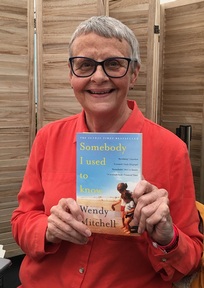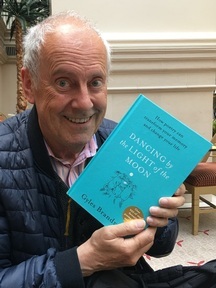Tips for reducing risk of age-related macular degeneration
In 2012, actress Judi Dench revealed she has age-related macular degeneration and can no longer read her film scripts, relying on friends and family to help her learn her lines.

She is one of around 600,000 people in the UK, who have age-related macular degeneration (AMD), which causes more than half of all blindness in Britain.
Another 200 people are diagnosed every day - a figure that is expected to rise as our ageing population increases. About half are registered as visually impaired, with the cost of AMD to the country currently put at £1.6bn a year.
Cathy Yelf, chief executive of the Macular Society says: “Until relatively recently AMD was regarded just as part of getting old. Many people with it were never even given a name for their condition. AMD was relatively rare when life expectancy was 70.
“But now many more people are living into their 80s and 90s and beyond and it is becoming much more common as a result. Indeed it is now the most common cause of sight loss in the developed world. In the UK more people are registered as visually impaired because of AMD than all other causes of sight loss put together. Public awareness of AMD, and the risk factors, is only just starting to catch up.”
The macula is a very small section of the retina, about the size of a grain of rice, and it is responsible for most of our vision including the fine detail of what we see, most of our colour vision and all of our central vision.
So, if your macula deteriorates, you cannot see faces, you can’t drive, you can’t read and at the end stage of the condition people have just a blank in the middle of their vision. It’s a very serious, very debilitating condition for people if they do not get the right kind of support and help.
Wet and dry AMD
There are two types of AMD. Research suggests that as many as 40,000 people a year develop wet age-related macular degeneration (wet AMD), with a further 44,000 people a year diagnosed with another, untreatable, form of AMD known as dry AMD. Dry age-related macular degeneration causes a gradual deterioration of the macula, usually over many years, as the retinal cells die off and are not re-generated.
The name ‘dry’ does not mean the person has dry eyes, just that the condition is not ‘wet’ age-related macular degeneration. The progression of dry age-related macular degeneration varies but in most people it develops over many months or years. Often people carry on as normal for some time.
In wet age-related macular degeneration abnormal blood vessels grow into the macula. These blood vessels leak blood or fluid, which leads to scarring of the macula and rapid loss of central vision. Wet age-related macular degeneration can develop very suddenly. It can now be treated if caught quickly.
Ms Yelf says: “If you are suspected as having wet AMD you should be referred to a specialist hospital AMD clinic for urgent treatment. Wet AMD can be slowed down by drugs that need to be given as an injection into the eye.

“Patients are given a local anaesthetic and the injection is given into the corner of the eye so the patient does not see the needle. Many say they don’t notice the injection, although some patients do experience some pain, usually after the anaesthetic has worn off.
“Research suggests that the earlier the treatment for wet AMD is given, the better the results. Treatment only restores lost vision in around a third of patients and only when given quickly. In most people it can merely slow the deterioration. Wet AMD can progress very quickly, within weeks, and so prompt treatment is vital. The Royal College of Ophthalmologists says that a person with suspected wet AMD should be seen by a retinal specialist within a week and treated within another week."
Reducing the risk
As with most health matters, there are lifestyle choices you can make to keep your eyes healthy. Ms Yelf comments: “Everyone should be given general advice on good health because what is good for your heart and lungs is also good for your eyes.
“Number one is don’t smoke. Smoking causes AMD in people who have a genetic predisposition to develop the condition. Keeping your weight and blood pressure normal and eating a diet rich in fruit and vegetables also lowers the risk of getting advanced AMD.
“Some research suggests that taking a supplement with high levels of anti-oxidants can reduce the progression of AMD in some people. Your optometrist can advise you.”
Regular eye health checks for older people are important as the early signs of AMD can be detected by an optometrist. If a person has cognitive difficulties it can be harder to spot the signs of AMD and equally there is some evidence that sight loss can accelerate cognitive decline in some people.
Awareness of Charles Bonnet Syndrome, which manifests itself as visual hallucinations in older people, is important as this phenomenon is often confused with dementia or assumed to be caused by, for example, urinary tract infections.
Elaine Bastable, suffers from the debilitating disease. The 81-year-old who had a cookery career and worked with celebrity chef Delia Smith on the first TV series of Delia Smith’s Complete Cookery Course, was diagnosed with wet AMD in 2004.

When Delia went to the oven saying “Here’s one I prepared earlier”, whatever dish was produced had been prepared by Elaine. She also created a rhyme-inspired illustrated cookery book for children, Recipes and Rhymes.
First diagnosed with wet AMD in one eye in 2004, she initially received regular hospital treatment of injections to slow down its progression. “I also went along to the Macular Society’s meetings in Banstead, Surrey and was overwhelmed by the help and assistance offered – particularly the peer-support groups where we can support each other.”
Nine years later, however, her second eye was affected by rapidly developing AMD. “I went to the Moorfields Eye Hospital in London early in 2013, where they told me there was a major bleed and that this would lead to devastating loss of vision by the end of the year.” Treating the eye was not an option this time as it carried risks and would not provide any benefit. Elaine says: “It seems as if overnight I gave the car away, and within a couple of weeks I could not read at all… not even my Christmas cards which was distressing.”
Nevertheless, before losing her sight in the second eye, Elaine was able to update and republish a cookery book for children she had written many years earlier. She says: “Fortunately I had just finished when my sight went. It was so noticeable to me, having just done all the reading for this new version of the book. If it had happened a few months earlier I would never have finished the job.”
Support and symptoms
For those who have developed the condition – the Macular Society has a wealth of support services ranging from advisors who offer support and help in understanding macular disease from sharing about obtaining treatment and staying independent through technology.
Other support offered by the Macular Society includes a free counselling service.
For those caring for older people, the early signs of dry AMD can be difficult to detect especially if it is occurs only in one eye. The person affected may find their night vision and colour vision is poorer. Ms Yelf says: “Blurred vision is common and a person may think they need new glasses. People with wet AMD may report that their vision is distorted, for example straight lines may become wavy. It’s important to note that dry AMD can become wet so changes to a person’s vision should be acted on.”
A person with AMD may need emotional support as a diagnosis of sight loss is associated with much higher than average levels of depression and suicidal feelings. As a person’s sight loss progresses they will need proper assessment of their needs for low vision aids and other adjustments to their living accommodation, for example:
• High contrast surroundings such as high contrast door frames or brightly coloured crockery on a pale table cloth
• Bright, even lighting in rooms that does not cast deep shadows or un-comfortable glare
• Cool-to-the-touch task lighting that allows people to see close up
• Large print, high contrast signage and large print or audio reading materials.
In search of a cure
There is some exciting research into macular disease including stem cell and gene therapy research. However, there is nothing that is going to reach patients in the immediate future and the Macular Society is campaigning for more research into AMD as a matter of urgency.
As Ms Yelf is keen to underline: “No one should face macular disease alone. Our aim is to raise awareness of macular disease so that everyone who needs our support knows we are here. We also want to increase funding of research into macular conditions so that one day we can overcome macular disease.”
For further information about the Macular Society, please email info@macularsociety.org
Latest Features News
 28-Nov-19
2019 Election: Labour pledges £10.8 bn for free personal care while Boris Johnson sidelines social care
28-Nov-19
2019 Election: Labour pledges £10.8 bn for free personal care while Boris Johnson sidelines social care
 18-Oct-19
Podcast: Wendy Mitchell and dementia: 'My biggest fear is not knowing who my daughters are'
18-Oct-19
Podcast: Wendy Mitchell and dementia: 'My biggest fear is not knowing who my daughters are'
 30-Sep-19
World's oldest diver aged 96 says 'never accept the fact you are getting old'
30-Sep-19
World's oldest diver aged 96 says 'never accept the fact you are getting old'
 27-Sep-19
Exclusive: Care minister backs care workers' call for time off to grieve and attend funerals
27-Sep-19
Exclusive: Care minister backs care workers' call for time off to grieve and attend funerals
 20-Sep-19
Podcast: Gyles Brandreth urges care workers to learn poetry with elderly
20-Sep-19
Podcast: Gyles Brandreth urges care workers to learn poetry with elderly